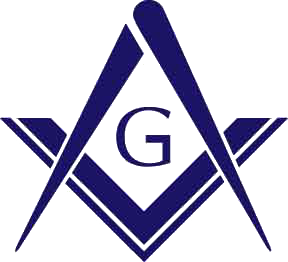Author Unknown
Freemasonry as we know it today came into being in the early 1700s, when the first Grand Lodge of England was formed. Masonry prior to that time was a guild or union of stoneworkers, who practiced their trade throughout England and Europe, and were responsible for the beautiful cathedrals and public buildings throughout the continent. Whole masonic families lived and died during the construction of each of those buildings, some of which took over a century to build.
The term Freemason arose because these builders were not bound to a single Lord, Earl, Duke, or King, but instead worked under a contract, and when finished, were free to leave the country to take on another project. As this was a very prestigious fraternity, the gentry of the time applied for membership, and were accepted, whence originated the Accepted part of our Free and Accepted Masons. As time went by, more and more speculative Masons were accepted, and the actual building of massive structures declined, till around 1717, the majority of Freemasons were as we are today, builders of men and minds, instead of impressive edifices, and the first Grand Lodge of England was formed.
This discourse is designed to give you a brief introduction to the Craft and the mainstay of Freemasonry, the Blue Lodge, or symbolic lodge, as it is more properly known. Every Mason belonging to any Masonic body begins in a symbolic lodge, where he receives the first three degrees in Masonry. These are known, respectively, as the Entered Apprentice, Fellowcraft and Master Masons Degrees. Some refer to them as the 1st, 2nd and 3rd Degrees. I find those terms disagreeable, for to my knowledge, there are no rubber hoses, men in trench coats in darkened rooms or other forms of persuasion where a 3rd degree may be imposed upon one. Instead, only the most profound ritual and symbolism characterizes our degrees, designed to open the eyes and mind to a higher ideal. A person desiring admittance into our Fraternity must, of his own free will, approach a Master Mason and request a petition, which he must fill out in his own hand, and have it signed by two Masons who have known him for over a year. This oft-times is difficult, because some of us are so afraid of divulging secrets we don’t let it be known we are Masons. This is not as it should be, and gives rise to a subject for a whole evenings speech, but be that as it may, the non-Mason should have his signed petition submitted to a Lodge, where it is read at a regular meeting. A committee is formed to call on the prospect to determine his motives and acceptability. Their report is returned one month hence, when the petition is brought up for action. If the ballot by the members present is 100% in favor of the applicant, he is so informed and then informed of the time to appear for his Entered Apprentice degree. A single black ball in the ballot box is sufficient to prevent the prospect from being accepted, whence originated the term Black Ball.
Masonry is a closed society, not open to the general public, but rather to persons of like persuasions and ideals. While no two people are alike, they can share a common belief in the brotherhood of man and in ONE who we in Masonry refer to as the Supreme Architect of the Universe. The tenets of Masonry are Brotherhood, Relief and Truth. We espouse all men being equal, regardless of their worldly wealth or position, and attempt to relieve our fellow mans woes and tribulations, again regardless of membership in the Fraternity. We also practice the virtue of Truth. This may be the hardest of all, because it is often easier to tell a little white lie than to confront one with the truth. I have been guilty, and expect to be so again, but every time I tell a little white lie, I think perhaps I’m not really doing that someone a favor.
Masonry is the oldest Fraternity in the world. Even though there are those who claim it is a false religion and heretic in nature, I, as a Christian, find nothing in Freemasonry contradictory with my Bible or beliefs. Some religions claim we as Freemasons worship the Devil, and require our members to make blood oaths. Neither is true. Our oaths, or obligations, as we call them, are purely symbolic in nature, to impress on the candidate the seriousness of our ceremonies and teachings. They are never to be taken literally. The only real penalties ever imposed in Masonry are those of reprimand, suspension and expulsion, depending on the severity of the offense. Masonry requires every applicant to profess a belief in Deity. No meeting of Masons can begin without the Holy Bible open on the Altar, and a prayer to the Almighty being made.
The ritual practiced by the symbolic lodge is called York Rite, and follows into the Royal Arch Chapter, thence into the Commandry. On the other side of the coin is the Scottish Rite, which opens another door of Masonry.
This has in no way intended to be an all-inclusive discourse, but merely a few words to perhaps pique your interest, and generate a few questions which we may be able to answer this evening. In closing, Masonry is a brotherhood extending throughout the world, and never is a Mason truly alone while the Fraternity exists.


